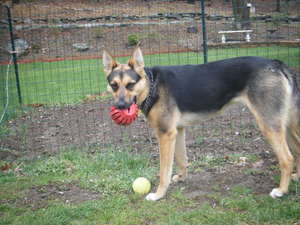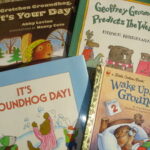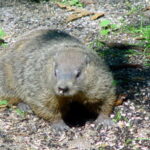The first thing to ask yourself before building a garden fence is what you’re trying to fence in and what you’re trying to fence out. The most common reason for creating a garden fence is to keep animals out, animals which love the taste of fresh growing vegetables. Common vegetable predators are groundhogs, rabbits, skunks, raccoons and deer. Few fences are impregnable to all of them so you’ll have to make some compromises. A fence tall enough to keep out deer will not keep out burrowing animals like the groundhog, not unless you bury part of the fence under the ground.
Most likely, you’ll want a practical fence which keeps out rabbits and groundhogs and your pets. Cost is usually a consideration and there are a variety of wire fences which are in a lower price range. Of metallic fencing, there is wire and chain link fencing. Chain link fencing requires the purchase of various types of fasteners and pieces-the chain link fencing, the metallic posts (usually aluminum).
Another option is wooden fencing, but this requires fence-post setting, a more involved and more expensive option. A wooden fence is at least semi-permanent, whereas a wire fence can be moved without too much trouble. A tall fence with wooden fence posts and wire or wood sections is favored for deer protection. For a complete instructional guide to setting fence posts in concrete, you may be interested in reading my Associated Content article on the subject at:
www.associatedcontent.com/article/157193/how_to_set_fence_posts.html
For gardening, most people want a simple, low-cost wire fence which can be quickly put together and moved, if necessary. In addition to the fencing itself, you must buy metal U-channel fence posts designed for the purpose. The metal stakes of the type shown in the picture come in varying heights-three, four, five, and six foot lengths. Consider that these metal stakes are designed to be driven into the ground to the level of about one foot. The flared metal flanges at the bottom of the fence posts must be underground.
That means that a 72 inch U-channel fence post will actually be about five foot tall. The reason I mention this is because the determined deer will have little problem jumping over a five foot fence. The metal fence posts of this type are not designed to support a high fence. For areas with severe deer problems, an eight foot high fence is preferable.
However, the metal fence posts and welded wire fencing are more than adequate for the average small garden. The flanges at the bottom give the stakes stability in the ground and prevent lateral movement. The metal fence posts also have little hooks which capture the wire fence and hold it in place.
But what of the wire itself? Most of the garden fence sold in stores comes in 14 gauge thickness, adequate for our purposes. It is preferable, and more attractive, to spend the extra money on plastic coated welded wire fencing. It is stronger than chicken wire and holds its shape better. It comes in rolls of varying lengths. The first step would be to measure the perimeter of the are you wish to fence. When you buy a roll of welded wire fencing, it will be easier to handle if you unroll it first and lay it down flat for awhile before you fix it to the fence posts.
You’ll need some tools: a small sledge or stone hammer, not a carpenter style hammer. A level is helpful but not necessary. A thick block of wood placed on the top of the fence post will prevent you from smashing the tops of the posts, as I did. A large needle-nose plier will help you to attach the fence to the fence posts. It’s a job you can do yourself, but another person would certainly help, especially in stretching and setting the fence post.
Reference:
- The article content is derived from personal experience.






